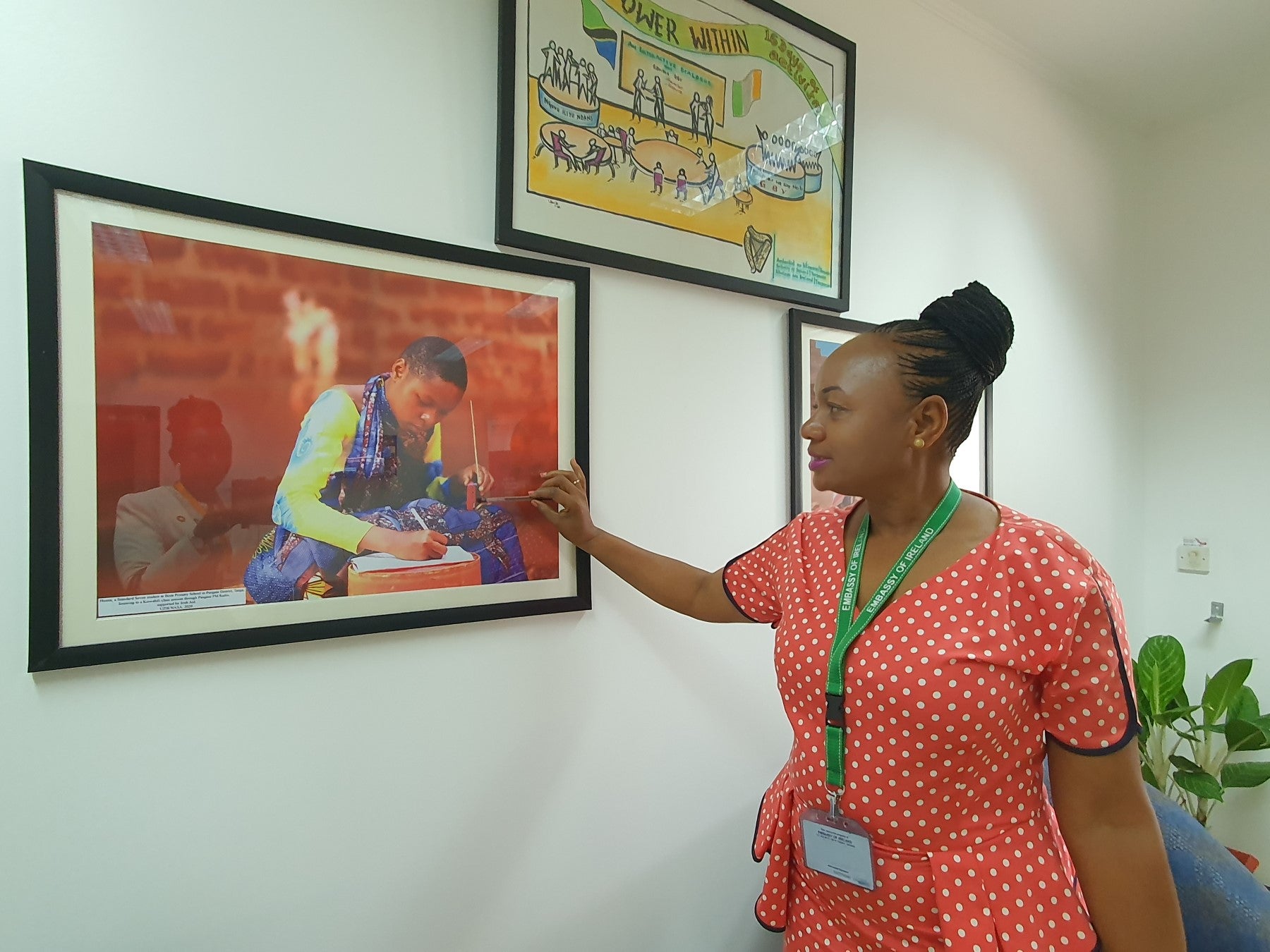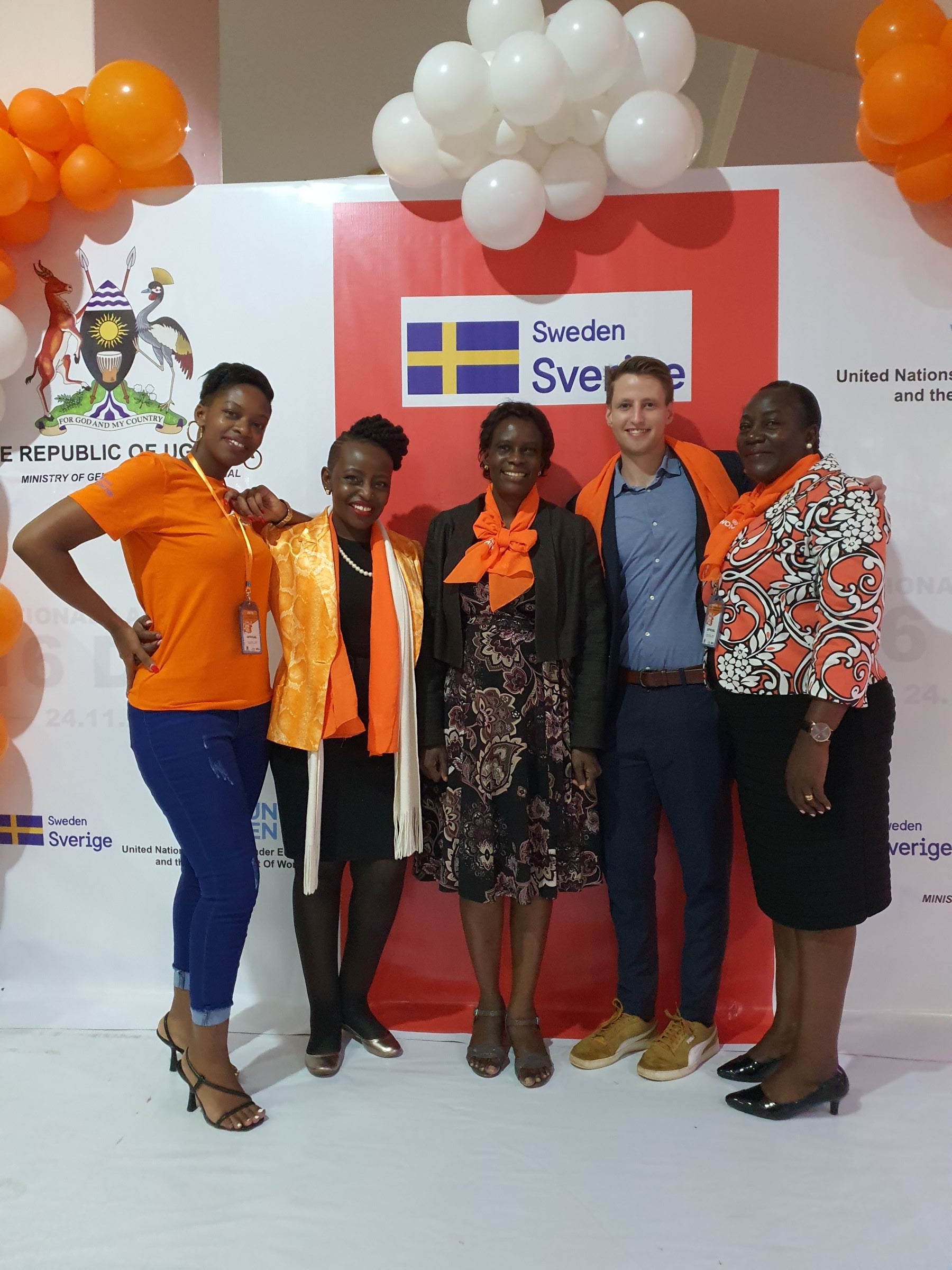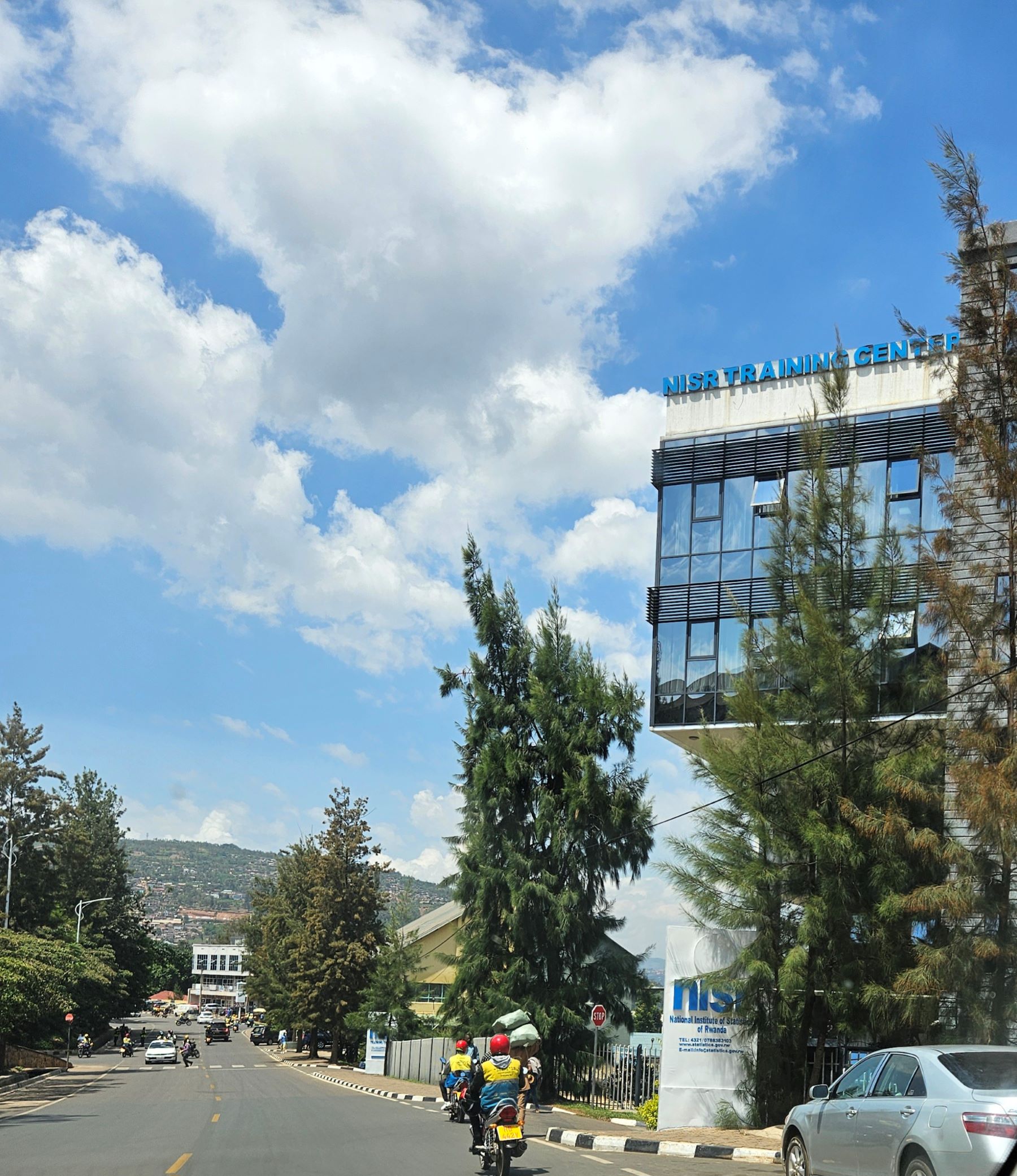How Gender Data is Enabling Better Services for Gender-Based Violence Survivors – A Tale of Five Countries in East and Southern Africa
Date:

Picture this, a young woman and her three children, all under the age of five, is suddenly out in the cold after a violent quarrel with her husband. He has been violent since they got married eight years ago, but this time was different—he had threatened to kill her and the children. She was uncertain where to go but had still fled as soon as he fell asleep. It was 2am.
This is easily the story of many women, and even girls, in East and Southern Africa.
According to the World Bank, at least two out of every five women and girls (42 per cent) in the region experience physical or sexual violence in their lifetimes. The data finds that the effects of gender-based violence (GBV) go beyond the survivors to negatively impact families and communities, even spanning generations.
UN Women data shows that Sub-Saharan Africa has the highest prevalence of child marriage globally with 32 per cent of women who are married or in union having married before the age of 18. Despite most countries in the region have adopting laws prohibiting and criminalizing GBV and putting in place various related services, East and Southern Africa continues to experience high rates of GBV; one in every three girls and women between the ages of 15 and 49 years and one in every four girls and women aged 15 to 24 years has experienced intimate partner violence (IPV). The highest rates of female genital mutilation (FGM) worldwide are in this region with approximately 90 per cent of girls and women in Somalia, Djibouti, Sudan, and Eritrea undergoing this harmful practice.

GBV gaps in criminal law persist and law enforcement and access to justice remain a challenge. GBV in emergency contexts, such as Sudan, is a major concern and femicide is also growing issue in some countries such as Kenya, where official data shows that 45 per cent of girls and women aged 15 to 49 have experienced physical violence. Data shows that the main perpetrators of physical violence against women in Kenya are their husbands or intimate partners and that social tolerance for violence against women persists with 42 per cent of women and 36 per cent of men believing that a man can be justified for beating his wife under certain circumstances.
While daunting, interestingly, these numbers have also become a symbol of hope where decision-makers, including policy and lawmakers use the data to ensure that GBV survivors get the assistance that they so desperately need. By using data to better understand the type and extent of GBV, where it is taking place, and who the perpetrators are, some East and Southern African countries have designed and improved the services available to survivors, helping them to access timely and effective help.

In Rwanda and Tanzania, GBV data has informed the establishment of as one-stop centres, where survivors can not only seek shelter but also easily access medical, legal, and psychological services. Aptly named Isange (meaning, “feel at home”) One-Stop Centres in Rwanda, the centres are operational in all 44 districts. In many instances, the Isange One-Stop Centres are embedded in public hospitals.
“Some Isanges also serve as safehouses for survivors whose lives are in danger,” said Rebecca Asiimwe, Director of Gender Mainstreaming at the Gender Monitoring Office (GMO) in Rwanda.
“In cases of intimate partner violence or other forms of domestic violence, it is often unsafe for the survivor to go back home after seeking help at the Isange. Some centres provide space for survivors to spend a few days as RIB progresses with the case,” said Asiimwe.

Tanzania has established police gender and children’s desks as well as one-stop centres, most notably in Zanzibar, where every district has a gender desk and a one-stop centre comprising counselling, health services and legal aid. Gender data released every month and published in the mainstream media is helping to inform the allocation of resources, most notably security manpower to hotspots based on emerging patterns shown in the data.
Where data from monthly GBV data releases from the Office of the Chief Government Statistician (OCGS) shows an uptick in incidences, security and other services provide additional support in those communities with surge services for the identified hotspots.
Data has also helped to inform a motion in Parliament advocating for more resources for the police to combat GBV. It has also been instrumental in engaging the private sector to contribute resources such as motorcycles for regular patrols and support for the construction of additional police posts to boost security at the grassroots level.
Gender data on GBV has also informed specialized training for police in Tanzania and triggered the establishment of police gender desks for confidential reporting of GBV cases. This has helped to ensure that survivors have a safe space where they can be received in a sensitive manner as they report incidences in their quest for justice.
This is important as UN Women data shows that some legal systems consider fewer GBV types than others, and some omit to link or only vaguely link the types of GBV to criminal offences thereby denying survivors and victims much-needed justice.
“Since about 2021, there has been a notable increase in the amount and variety of gender data that is available,” said Inspector Said at Zanzibar Police Headquarters’ Statistics Unit.
“The partnership between OCGS and UN Women has contributed to this increase and also helped members of the Police Service to have a broader understanding of GBV,” said Said.
“OCGS monthly media releases and increased survivor reporting as a result of greater community awareness contributed to the decision to set up a special court for women and children in 2021,” said Said.
“This special court is supporting the speedy resolution of cases and helping survivors to access quick and easy justice without the inconvenience of long drawn out cases, especially where there is a spike in cases,” explained Said.
Rwanda’s Isange Centres serve as GBV reporting sites as they work closely with the Rwanda Investigation Bureau (RIB) to handle cases of GBV. Representatives from the agency attend to survivors alongside a counsellor and medico-legal personnel and compile and submit the survivor’s dossier for prosecution and the pursuit of justice. Data from the National Institute of Statistics in Rwanda (NISR) helped to inform the establishment of these centres, which include safehouses that provide emergency shelter to survivors−a feature that was also informed by gender data. According to 2021 NISR data, 41.5 per cent of ever-partnered girls and women aged 15 to 49 years have suffered physical and/or sexual violence at the hands of an intimate partner at least once in their lifetime.

In Uganda, the pressing need for timely and effective access to services for GBV survivors is evident. Official data from 2021 shows that more than half (55.5 per cent) of girls and women aged 15 to 59 years have experienced physical and/or intimate partner violence (IPV) at least once in their lifetime. Findings from the National Violence Against Women and Girls Survey by the Uganda Bureau of Statistics (UBOS), with support from UN Women and the Stockholm Institute, have helped to strengthen collaboration between the Judiciary and police services. The Survey found that 95 per cent of Ugandan women had experienced physical and/or sexual violence; the then Gender State Minister said that GBV had led to at least 168 deaths during the previous year.
Uganda has a spatial data portal that brings together all administrative data (data from hospitals, police, and court records, among others) on GBV, further enhancing understanding of the patterns for provision of timely and effective services to survivors. The portal includes sections on household and facility listings and is guiding the appreciation for and use of statistics in the Uganda Police Force, and boosting how the police regard and respond to GBV cases, for example, cases of rape versus defilement. Special courts have been established to expedite the hearing and conclusion of GBV cases, thus improving access to justice for survivors.
Kenya has not been left behind; a recent case study of Kisumu County and neighbouring counties found that health information system data and citizen data from grassroots organizations, such as the Nyalenda Young Turks, Women Concern Centre (WCC) and state agencies such as the National Gender and Equality Commission (NGEC), influenced the development of the Kisumu County Sexual and Gender-based Violence (SGBV) Policy to strategically combat SGBV. The Policy paved the way for the establishment of the Kisumu County SGBV Court in 2023−the third in the country. Gender data has identified Kisumu County as a GBV hotspot alongside Mombasa and Siaya counties. The first specialized SGBV court in the country is in Shanzu in Mombasa County followed by Busia County’s SGBV Court, and then Kisumu’s SGBV Court enhancing the administration of and access to justice for survivors. Kenya is one of 13 countries out of 16 in East and Southern Africa that have specialized GBV courts.
“The policies are evidence-based, which has made them extremely relevant to the various contexts as well as timely,” said Joel Okumu Assistant Director at the State Department for Gender and Affirmative Action and based in the Kisumu County office.
Several other counties have used gender data to develop comprehensive policies that enhance the prevention of and response to GBV, and, more specifically, violence against women, who have been identified as the main victims of GBV by a large proportion. The Homa Bay County SGBV Policy (2023) uses monthly prevalence cases of SGBV data from the Police Gender Desk, Kenya Demographic Health Services (KDHS) data, and 2020 data from the National Crime Research Centre (NCRC), while the Siaya County GBV Policy, also based on evidence from various gender data sources, preceded the establishment of the Siaya County SGBV Court in June 2023. The Busia County Policy on GBV is hinged on the county’s commitments to the Generation Equality Forum (GEF), which is convened by UN Women.
“In Busia for example, cases of teen pregnancy are very high and majority are the result of incest. Efforts to address this form of GBV here thus emphasizes household-level interventions as this is the level at which the violations are taking place,” said Okumu.

In Ethiopia, collaboration between the Ministry of Women and Social Affairs (MoWSA), UN Women, and the Ethiopia Statistics Service (ESS, formerly Central Statistics Agency, CSA) on the latest (2024) Ethiopia Demographic Health Survey (EDHS), resulted in the development of a standalone module on domestic violence (GBV) in the Survey. This data, which is currently being collected and analyzed, will be instrumental in preventing and addressing GBV through advocacy, programming, decision and policy-making.
Already, similar available data has been used to update and amend the National Women’s Policy of Ethiopia (1993), which has been reviewed by the Ministry of Planning and Development (MoPD) and the Council of Ministers in preparation for approval. This is a much-anticipated development as, according to EDHS 2016, at least one out of every three women in Ethiopia has been beaten, coerced into sex, or otherwise abused in her lifetime by an intimate partner. Reporting rates are low as 2 out of 3 (or 66 per cent) of women and girls do not report this violence.
The amended Ethiopia Women’s Policy will pave the way for improved services for GBV survivors, among other gender equality and women's empowerment (GEWE) measures, and guide the allocation of resources for initiatives such as sensitization to help prevent GBV and information and advocacy to encourage reporting of these cases.
This is in line with the very welcome shift in the understanding, culture and practice of handling all forms of GBV in the region underpinned by gender data.